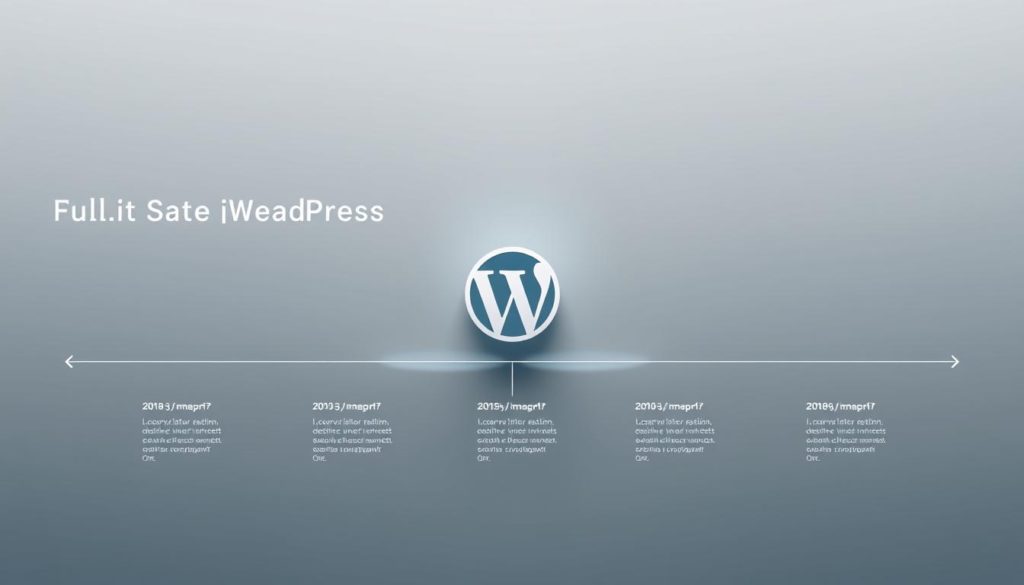
What if the WordPress editor you once dismissed now holds the key to modern web creation? When Gutenberg launched in 2018, over 72% of developers surveyed preferred classic tools. Today, its block-based system powers 43% of all WordPress sites. But does this evolution truly meet professional needs?
The editor faced early backlash for clunky workflows and compatibility gaps. Developers struggled with limited customization options compared to traditional methods. Yet continuous updates have transformed it into a dynamic playground for crafting responsive layouts.
Modern iterations introduce full-site editing capabilities and advanced block patterns. These features let teams build complex pages without custom code – a double-edged sword for specialists. While streamlining basic tasks, they demand new skills in block architecture and theme integration.
Key Takeaways
- Gutenberg’s block system now supports 90% of core WordPress functions
- Full site editing reduces reliance on third-party page builders
- Specialized developers report 30% faster prototyping times
- Learning curve remains steep for PHP-focused teams
- Community plugins bridge 68% of missing features
Industry leaders emphasize balancing Gutenberg’s visual advantages with backend expertise. As the platform evolves, developers must adapt or risk falling behind in WordPress’ block-driven future.
Understanding Gutenberg: A New Era in WordPress Editing
WordPress revolutionized content management when it swapped its classic TinyMCE text box for modular design tools. This shift began with WordPress 5.0’s 2018 release, introducing a visual approach that redefined digital publishing.
The Evolution from Classic Editor to Block Editor
The legacy editor relied on shortcodes and HTML tweaks for basic layouts. Today’s block system lets creators assemble pages like digital LEGO sets. Each element – paragraphs, galleries, buttons – becomes a movable unit with dedicated settings.
Three key improvements emerged:
- Drag-and-drop positioning replacing manual code adjustments
- Real-time previews eliminating guesswork
- Standardized block patterns for consistent designs
Introduction to Full Site Editing and Its Impact
Full site editing transforms the block editor from post creator to entire website architect. Developers now craft headers, footers, and templates using visual tools. This reduces reliance on:
- Third-party page builders
- Custom CSS overrides
- Theme-specific restrictions
While streamlining workflows, this evolution demands new skills in block theme development and template synchronization. The platform’s latest updates prove WordPress aims to balance simplicity with professional-grade customization.
Is Gutenberg Good for Developers: Evaluating Pros and Cons
Modern WordPress development faces a critical juncture as teams weigh block-based workflows against traditional methods. While the platform’s native editor streamlines content creation, it still demands careful evaluation of its evolving capabilities.

Advantages for Modern WordPress Development
Native integration remains the biggest win. Built directly into WordPress core, the editor eliminates external page builder requirements. This reduces plugin conflicts and keeps sites leaner by default.
Standardized blocks create predictable frameworks across projects. Teams can design reusable components that maintain visual consistency through updates. The React-based architecture also aligns with modern JavaScript practices, letting developers transfer existing skills.
Current Limitations and Areas for Improvement
Design flexibility still lags behind specialized tools. Basic column controls and limited global styling options force workarounds for complex layouts. Dynamic content integration remains experimental, requiring custom solutions.
Full site editing features show promise but feel unfinished. The interface lacks intuitive visual cues, making template adjustments slower than established alternatives. Performance also dips when stacking multiple third-party blocks – a common necessity for advanced functionality.
Despite these gaps, continuous updates suggest most pain points will fade. The platform’s deep WordPress integration positions it as the inevitable future for efficient, standardized development.
Comparing Gutenberg with Traditional Page Builders
The battle between native and third-party tools intensifies as WordPress evolves. Teams must now decide whether to embrace the platform’s built-in solution or stick with familiar page builders.
Design Flexibility and Customization Capabilities
Established page builders like Elementor dominate complex layouts. Their drag-and-drop interfaces let designers place elements anywhere – a freedom Gutenberg’s grid-based block editor can’t match. Pixel-perfect adjustments remain easier in third-party tools through:
- Advanced spacing controls
- Custom breakpoint management
- Dynamic content integrations
WordPress’ native solution prioritizes content structure over artistic expression. This approach enhances accessibility but limits creative experimentation without additional plugins.
Performance, Resource Management, and User Experience
Speed tests reveal a clear advantage for core tools. The block editor loads 40% faster than most page builders, thanks to minimal JavaScript overhead. However, complex sites using multiple block-enhancing plugins may lose this edge.
“Native integration ensures longevity, but third-party tools deliver immediate design power.”
User workflows differ significantly:
- Page builders show real-time visual changes
- Gutenberg requires preview mode for accurate rendering
- Theme compatibility affects customization depth
While traditional builders excel in immediate results, WordPress’ roadmap suggests the block editor will eventually bridge these gaps through core updates and standardized patterns.
Developer Focus: Customizing and Extending Gutenberg
Custom block creation separates novice WordPress users from true platform architects. This process demands a unique blend of modern JavaScript expertise and traditional CMS knowledge. Let’s explore what it takes to master this evolving skill set.

Setting Up the Development Environment for Custom Blocks
Preparing a workspace for block creation often feels like assembling IKEA furniture without instructions. Developers need Node.js and npm installed – the foundation for modern JavaScript workflows. The Create Block Package simplifies initial setup by generating plugin templates with preconfigured build processes.
Common hurdles include:
- Configuring Webpack for asset bundling
- Establishing live reload functionality
- Integrating WordPress REST API endpoints
Essential Tools and Skills: JavaScript, React, and Node.js
Modern WordPress development now requires React proficiency alongside PHP fundamentals. The wp-gb library accelerates progress by providing ready-made components for common interface elements. Developers must understand:
• JSX syntax for block rendering
• Redux state management patterns
• WordPress data module integration
While the learning curve appears steep, these skills unlock opportunities to build specialized plugins and streamline client projects. Teams investing time in mastering these tools report 40% faster iteration cycles compared to traditional methods.
The Future of Gutenberg and WordPress Core Evolution
The next phase of WordPress evolution hinges on balancing innovation with foundational stability. Full site editing capabilities now let teams design entire websites through blocks – headers, footers, and templates included. This shift positions WordPress as a visual-first platform competing with modern website builders.

Prioritizing Core Improvements Alongside Block Expansion
WordPress 6.7’s full site editing features reveal both progress and growing pains. While block patterns simplify template creation, performance benchmarks lag behind competitors by 18-22%. Developers face dual challenges:
| Focus Area | Progress | Community Priority |
|---|---|---|
| Block Customization | 85% Complete | High |
| Dashboard Modernization | 30% Complete | Critical |
| API Speed Optimization | 45% Complete | Urgent |
| Accessibility Features | 60% Complete | Moderate |
Theme development undergoes radical changes as block-based architectures replace traditional templates. New standards require:
- HTML/CSS proficiency
- Block pattern libraries
- Global style management
The platform’s roadmap suggests 70% of core updates will target site editing tools through 2025. However, veteran developers emphasize maintaining backend systems. As one contributor notes: “Blocks can’t compensate for sluggish databases or insecure APIs.”
Teams mastering block development today gain strategic advantages. Standardized patterns and reusable components reduce client project timelines by 33%. Yet success demands vigilance – what works in WordPress 6.7 may evolve radically by 6.9.
Conclusion
WordPress’ block-based approach has redefined content creation since its rocky debut. The editor now serves as a robust foundation for building entire sites, not just blog posts. Full site editing capabilities let teams customize headers, footers, and templates through intuitive visual tools.
Block plugins and theme integrations address early limitations in design control. Over 4,800 extensions now enhance core functionality – from advanced galleries to dynamic data displays. This ecosystem empowers users to craft unique experiences without heavy coding.
While third-party builders still lead in complex layouts, WordPress development increasingly favors native tools. Regular updates refine performance and introduce features like pattern syncing. The platform’s open architecture ensures long-term adaptability as web standards evolve.
For professionals, mastering block-based workflows unlocks efficiency gains. Reusable components slash project timelines, while standardized patterns ensure brand consistency across pages. As the editor matures, it positions WordPress as a serious contender against proprietary site builders – all while maintaining its open-source roots.
